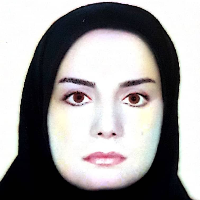MAPO and PTAI risk assessment methods and their relationships with low back pain prevalence in nursing staff: A comparative study
The aim of this study was to investigate the causes of low back pain (LBP) among nurses and provide measures to control and correct the risk factors using two methods of risk assessment, MAPO and PTAI.
This cross-sectional study was conducted on a total number of 480 nursing staff working in public hospitals in Khuzestan Province who were selectes using stratified random sampling method. Data were collected though a questionnaire in four sections including Nordic Musculoskeletal Questionnaire(NMQ), a demographic characteristics information form, as well as MAPO and PTAI checklists which were completed using field visits and observations. After completing the checklists, relevant indicators were evaluated at three levels. Data analysis was performed using SPSS software (version 16) as well as Chi-square test and Pearson correlation coefficient.
According to the results, 72.92% of the nurses were suffering from LBP. Based on the evaluations performed by the MAPO method, 16.66% of the respondents were at low-risk level, 60.41% of them at moderate-risk level, and 22.91% of the individuals at high-risk level. However, the findings of the PTAI revealed that 23.95% of the respondents were at risk level I, 52.08% of these individuals at risk level II, and 23.95% of them at risk level III. According to the Chi-square test results, there was a statistically significant relationship between risk levels of both MAPO method and PTAI and LBP.
The results showed that with increasing the indicator levels in bboth MAPO and PTAI methods, the rate of musculoskeletal disorders in the lumbar region increases. Consequently, the accuracy and the appropriateness of these techniques are assured and it was concluded that both techniques are efficient and reliable to determine the risk levels.
MAPO , PTAI , Low Back Pain , Nurses
-
Evaluation of Human Errors among Nurses Using Predictive Analysis of Cognitive Errors and Human Event Analysis Techniques: Case study of the Specific Responsibilities of the Cardiac Intensive Care Unit
GholamAbbas Shirali, Davood Afshari, *
Journal of Health and Safety at Work, -
The effect of noise on physiological parameters of workers in an oil and gas industry in Khuzestan province
Seyed Moslem Abedini, *, Morteza Parsa, Fatemeh Maghsoudi
Journal of Preventive Medicine,



